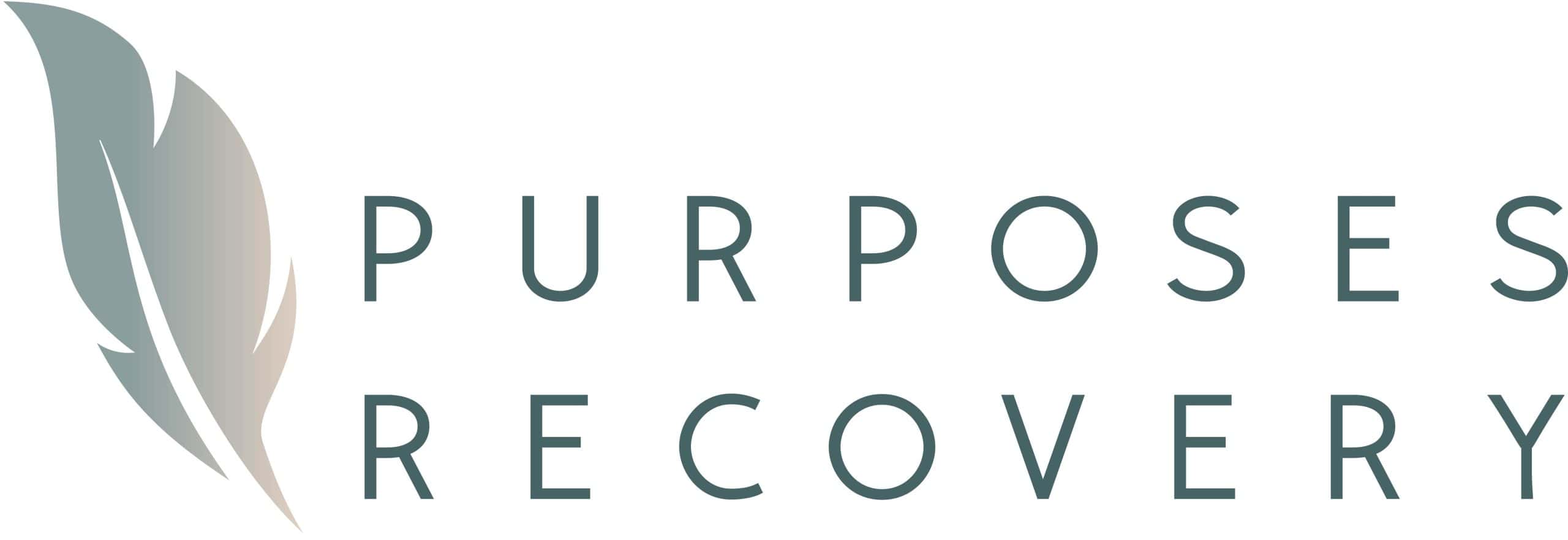Inpatient Drug Rehab Los Angeles, California: Residential Treatment Center in Los Angeles

Inpatient Addiction Treatment: Inpatient Drug Rehab Los Angeles, California
Inpatient addiction treatment in Los Angeles is a comprehensive and intensive program that addresses the physical, emotional, and psychological components of drug and alcohol addiction. With a focus on addressing the underlying causes of substance use and providing a supportive community for healing, our drug rehab in Los Angeles offers a safe and effective addiction treatment program for those looking to break free from the cycle of substance abuse.
Through a combination of counseling, medical support, mental health services, and dual diagnosis treatment, individuals are guided through the complex process of withdrawal and recovery by experienced medical professionals, therapists, and support staff at our facility in Los Angeles, California.
What is an Inpatient Drug Rehab?
Residential treatment, also known as inpatient treatment, is the most intensive level of rehab services available for individuals diagnosed with alcohol use disorder or other substance use disorders. Inpatient rehab programs typically include medical detox and comprehensive mental health treatment. This type of program is generally recommended for individuals with severe substance abuse issues or those who have struggled to maintain sobriety in outpatient settings.
In an inpatient drug rehab program, patients receive intensive, round-the-clock care and support from a team of healthcare professionals, including doctors, therapists, counselors, and other staff members. The program typically includes a combination of individual therapy, group therapy, medication management (if necessary), educational sessions, and various holistic treatments aimed at addressing the physical, psychological, and emotional aspects of addiction.
The structured environment of an inpatient drug rehab provides a supportive and therapeutic setting where individuals can focus solely on their recovery without the distractions and triggers of their regular environment. These programs often have a set duration, ranging from a few weeks to several months, depending on the individual’s needs and progress.
What Can I Expect at an Inpatient Rehab Center in Los Angeles, CA?
At Purposes Recovery, inpatient treatment for substance abuse begins with a thorough assessment of your unique circumstances. Our specialized team will assess your physical health, mental well-being, and substance use history to develop a personalized treatment plan for drug and alcohol rehab. With your consent, our staff may also collaborate with your family members and other professionals involved in your addiction recovery to address any additional challenges you may be facing.
Once the assessment is complete, the first step in our inpatient program for drug and alcohol addiction is often supervised detox, where medical professionals help patients safely manage withdrawal symptoms and begin the process of healing. After completing drug or alcohol detox programs, patients work with a team of professionals to create a personalized treatment plan that addresses their specific needs and goals for addiction recovery. This may include various therapeutic activities and interventions such as individual therapy sessions where you can explore underlying issues contributing to your addiction, group therapy sessions where you can connect with peers who are also on the path to recovery, and specialized programs such as cognitive behavioral therapy (CBT) or dialectical behavior therapy (DBT) to learn coping skills and relapse prevention strategies.
Additionally, patients have access to medical care and support to manage any withdrawal symptoms or co-occurring mental health disorders they may be experiencing. Our facility provides a safe and supportive environment where patients can focus solely on their recovery, free from outside distractions or triggers. Patients receive guidance and encouragement throughout their stay from our compassionate staff, who are dedicated to helping them achieve lasting sobriety and regain control of their lives.
Every program we offer is designed to promote holistic healing and empower individuals to build a strong foundation for long-term sobriety. This includes addressing not only the physical aspects of addiction but also the psychological, emotional, and social factors that contribute to substance abuse. Our goal is to provide comprehensive care that equips individuals with the skills and tools they need to navigate life’s challenges without resorting to drugs or alcohol. At Purposes Recovery, we believe in treating the whole person, not just the addiction, and our inpatient rehab center in Los Angeles, CA, is committed to supporting individuals on their journey to recovery every step of the way.
REQUEST A CALL FROM OUR TREATMENT CENTER IN LOS ANGELES CA
Recovery Starts at Our Drug Rehab in Los Angeles CA
"*" indicates required fields
What Happens After Residential Drug Rehab?
After completing residential drug rehab for conditions like substance abuse, mental health disorders, or other medical issues, individuals often transition to outpatient treatment programs to continue their recovery. Outpatient programs offer various levels of care tailored to meet the diverse needs of patients. Here’s an overview of the three common types of outpatient treatment programs that often follow inpatient drug treatment:
Standard Outpatient Program (OP):
- This program typically involves regular therapy sessions, counseling, medication management, and group therapy.
- Patients attend sessions a few times a week, usually for an hour or two each session.
- It’s suitable for individuals who have a stable home environment and a moderate level of support.
- Standard outpatient programs allow patients to continue their daily activities, such as work or school, while receiving treatment.
Intensive Outpatient Program (IOP):
- IOP provides a more structured level of care than standard outpatient programs but is less intensive than inpatient treatment.
- Patients attend sessions more frequently, often several times a week, for multiple hours each session.
- The program offers a comprehensive range of services, including individual therapy, group therapy, education sessions, and sometimes family therapy.
- IOP is beneficial for individuals who require more support than what standard outpatient programs offer but do not need the round-the-clock care of inpatient treatment.
Partial Hospitalization Program (PHP):
- PHP offers the highest level of outpatient care and is sometimes referred to as day treatment.
- Patients attend treatment sessions several hours a day, usually five days a week.
- This program provides a structured and intensive therapeutic environment, often including individual therapy, group therapy, medication assisted treatment, medication management and other specialized healthcare services.
- PHP is suitable for individuals who require close monitoring and support but do not need 24-hour supervision provided in inpatient settings.
In all these outpatient programs, the treatment team works closely with patients to develop individualized treatment plans tailored to their specific needs and goals. These plans may include therapy modalities such as cognitive-behavioral therapy (CBT), dialectical behavior therapy (DBT), medication-assisted treatment (MAT), and holistic approaches like yoga or mindfulness practices.
Additionally, outpatient programs often emphasize relapse prevention strategies, life skills development, and ongoing support to help patients maintain their recovery and successfully reintegrate into their communities. Regular assessment and adjustment of treatment plans are essential to ensure patients receive the most effective care throughout their recovery process.
What Are The Benefits of Inpatient Treatment for Drug and Alcohol Addiction Treatment in Los Angeles, CA?
Inpatient drug rehab in Los Angeles, CA, offers a comprehensive and structured approach to addiction treatment that is designed to help patients recover from drug and alcohol addiction. By staying at a center for an extended period of time, individuals can fully immerse themselves in the recovery process without the distractions and temptations of everyday life.
Additionally, inpatient treatment centers typically offer drug and alcohol detox programs to help patients safely and comfortably detoxify their bodies from harmful substances. Clients will find it easy to focus solely on their recovery as they are surrounded by a supportive community of peers and professionals who understand their struggles and are there to offer guidance and encouragement every step of the way.
Inpatient drug rehab also provides a structured routine that helps individuals develop healthy habits and routines conducive to long-term sobriety. From structured mealtimes to regular therapy sessions and recreational activities, this structured environment instills discipline and stability, which are crucial for maintaining sobriety beyond the confines of the treatment facility.
Are you or a loved one struggling with addiction to alcohol or other drugs? Call today for a confidential conversation with a treatment specialist.
How Long Is Inpatient Rehab in Los Angeles, California?
The duration of inpatient rehab in Los Angeles, California, can vary depending on several factors, including the individual’s specific needs, the severity of their addiction, and the treatment facility’s program structure. Typically, inpatient rehab programs last anywhere from 28 days to 90 days or longer.
- 28 to 30-Day Programs: Many inpatient rehab programs offer a standard 28 to 30-day duration. These programs provide intensive treatment and support during the initial stages of recovery, including detox, therapy, and education about addiction.
- 60 to 90-Day Programs: Some individuals may benefit from longer-term inpatient rehab programs lasting 60 to 90 days. These extended programs allow for more comprehensive treatment, deeper exploration of underlying issues contributing to addiction, and greater emphasis on developing coping skills and relapse prevention strategies.
- Longer-Term Programs: In some cases, individuals with severe or long-standing addiction may require even longer periods of residential treatment, which can extend beyond 90 days. These longer-term programs provide ongoing support and intensive therapy to address complex addiction issues.
Ultimately, the duration of inpatient rehab in Los Angeles, California, should be determined based on the individual’s specific needs and circumstances. Individuals need to work closely with treatment professionals to determine the most appropriate length of stay to achieve lasting sobriety and recovery.
After completing an inpatient program, individuals are generally encouraged to participate in outpatient rehab and support groups like Alcoholics Anonymous and Narcotics Anonymous as part of their aftercare plan to help them transition back into their everyday lives while maintaining their sobriety. With the assistance of trained professionals at our drug and alcoholism center, patients can develop coping mechanisms and strategies for dealing with triggers and cravings. This level of support is crucial for long-term success in recovery.
Why Should I Participate in an Inpatient Drug Rehab for Alcohol and Drug Addiction?
Our inpatient addiction treatment center located in the heart of Los Angeles offers a range of services to support individuals on their journey to recovery from drug and alcohol addiction. We understand the importance of a structured approach to drug rehab. Our inpatient facility not only offers medically supervised detox but also provides a safe haven for individuals to address their substance abuse without facing withdrawal symptoms alone. Our inpatient drug rehab program is designed to help individuals heal with our individualized treatment plans. We offer a range of therapies and health care services, including individual, group, and family therapy, ensuring that every aspect of recovery is addressed. We understand that healing is a multifaceted journey, and the plans for our treatment program reflect that.
If you or a loved one are looking for a treatment facility that looks like home, Purposes Recovery may be the place for you. Our addiction rehab offers a comfortable home environment, creating a sense of security and belonging for our clients. Most patients find it easy to heal from drug dependence at our rehab facility as it provides a welcoming and supportive atmosphere where they can focus solely on their recovery journey. Our treatment center fosters a sense of comfort and well-being conducive to healing with amenities and accommodations reminiscent of home, such as cozy living spaces, nutritious meals, and recreational activities. Additionally, our dedicated staff members are committed to providing personalized care and support, guiding individuals through each step of the recovery process with compassion and empathy.
We offer family therapy sessions and encourage family involvement throughout the treatment process, as we understand that the support of loved ones plays a crucial role in long-term recovery. Our experienced therapists work with both clients and their families to address communication issues, set healthy boundaries, and foster understanding and empathy. By involving families in the treatment process, we aim to strengthen relationships and provide a supportive network for individuals as they transition back into their communities.
Our addiction treatment center prioritizes continuity of care and offers comprehensive aftercare planning to support individuals as they navigate life after rehab. Our team collaborates closely with each client to develop a personalized aftercare plan that may include outpatient therapy, support group meetings, vocational training, and sober living arrangements. By providing ongoing support and resources, we strive to ensure our clients have the tools and support they need to maintain sobriety and thrive in their recovery journey.
What is the Cost of Inpatient/Residential Treatment in Los Angeles?
The cost of residential treatment for substance abuse in Los Angeles can vary widely depending on several factors, including the specific treatment center, the level of care provided, the duration of the program, and the amenities offered. On average, residential treatment for substance abuse in Los Angeles can range from $10,000 to $30,000 per month.
Here are some factors that can influence the cost of residential treatment in Los Angeles:
- Level of Care: Facilities offering more intensive inpatient addiction treatment, such as medically supervised detox, dual diagnosis treatment, and specialized therapies, may have higher costs.
- Duration of Treatment: The length of the residential treatment program can significantly impact the overall cost. Short-term programs, such as 30 days, may be less expensive than longer-term programs lasting 60 to 90 days or more.
- Amenities and Services: Residential treatment facilities may offer various amenities and services, such as private rooms, gourmet meals, recreational activities, and holistic therapies. Facilities with more luxurious amenities may have higher costs.
- Insurance Coverage: Some residential treatment programs in Los Angeles may accept health insurance plans, which can help offset the cost of treatment for individuals with coverage. We accept various insurance plans, making inpatient drug rehab a more accessible option for those in need of substance abuse treatment.
Ultimately, the cost of residential treatment in Los Angeles should be weighed against the quality of care provided and the potential benefits of treatment for overcoming addiction and achieving lasting recovery. When making decisions about residential treatment, it’s essential to research different treatment options, discuss payment options with treatment providers, and consider any available resources or support networks.
Where is Your Treatment Center Located?
Located in Los Angeles, CA, our premier treatment center offers 6 premium beds with panoramic views of Los Angeles. Our treatment center specializes in sub-acute detoxification, drug and alcohol residential rehabilitation, and mental health services for those in need of dual diagnosis treatment. Our services are backed by a 24/7 commitment to tailored, individualized care and relapse prevention services. During your stay at our treatment center in Los Angeles, you’ll enjoy a comfortable living suite overlooking the views of West Los Angeles, luxurious amenities, and gourmet meals by the on-site chef at our treatment center. For more information call (888) 482-0717.
Our Treatment Center in Los Angeles Accepts Most Private Health Insurance Plans
Our treatment center in Los Angeles accepts most health insurance plans to ensure our comprehensive rehabilitation services are accessible to those in need. We believe that financial constraints should not be a barrier to receiving high-quality addiction treatment. Our dedicated team is here to help you maximize your benefits and minimize any out-of-pocket expenses. If you do not have insurance, our team is available to help you explore options available to you.
Medical Reviewer

Eric Chaghouri, M.D.
GET HELP NOW
Are you or a loved one struggling with addiction to alcohol or other drugs? Call today for a confidential conversation with a treatment specialist.
Treatment Programs
MOST INSURANCE ACCEPTED
Free insurance benefit check
"*" indicates required fields
